Estimated reading time: 23 minutes.
March/2018 – The Canon SL2 is the smallest DSLR in the world. About 30% smaller than its bigger sister EOS T7i, the SL2 is an alternative for the amateur photographer looking for a compact but easy to use camera; not leaving the ergonomics, nor the faster DSLR operation behind; typical of Canon’s EOSs. Sharing the same 24MP APS-C sensor with the fast focusing Dual Pixel technology; the fast DIGIC7 processor; the SL2 also keeps the T7i’s performance and image quality, despite costing much lower at US$549 (body-only). But in an overcrowded market filled with smaller mirrorless cameras, should the EOS SL2 be the camera to get? Let’s find out! Nice reading.
At 12.2 x 9.3 x 6.9cm of 406g of mostly plastics, the EOS SL2 size and weight are indeed impressive; it’s the smallest DSLR in the world, despite not leaving the ergonomics behind. About 30% smaller than an EOS T7i, or up-to 60% smaller than a full-frame 5D series, the SL lineup is fair to its name – small and light – but at the same time keeps everything is in its right place; very easy to use. The generous right-hand grip… The angled shutter-release button… The optical viewfinder in line with the lens and flash unit… The same full Canon EF/EF-S lens mount… Everything is where it should be, and it feels just like any other Canon DSLR; just smaller. On the other hand it is of course bigger than most mirrorless cameras, but let’s be frank: after we mount the lenses on those machines, they gets as huge as any DSLRs, despite their ergonomics being… challenging. So the SL2 blends the best of both words, and it’s as portable as mirrorless; and as easy to use as a DSLR.
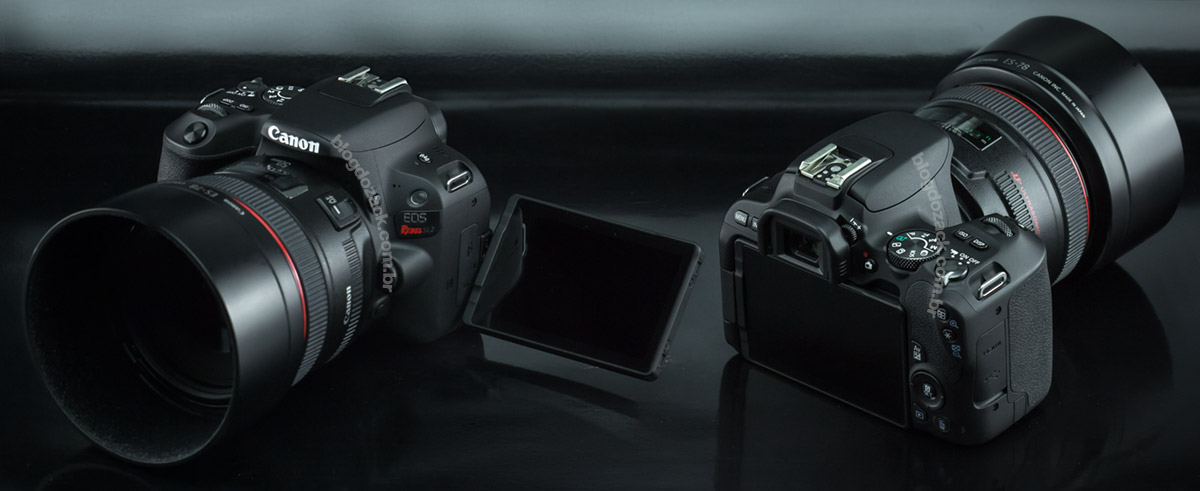
The all-plastic build is also impressive given its precision and finishing, showcasing Canon’s expertise in handling polycarbonate structures; as durable as ever. Gone is the time when entry-level cameras were poorly constructed, worse than metal ones, and on the SL2 the plastic panels follows recent EOS’s design-school; thinner thus easier to hold. Those coming from the older SL1 will notice the battery cover opening to its side (next to the tripod pin), made possible to carve up-to 0.5cm off the right-hand grip. Even with larger lenses the camera balances the same as bigger cameras, and that’s the main reason to get a SL2: it’s small, it’s plastic, it’s cheap, it’s Rebel; but nonetheless very comfortable to use. So thinking about it’s agility and practicality, it will be difficult to recommend a similarly-priced mirrorless after this review; prefer the easier to use EOS SL2 DSLR.
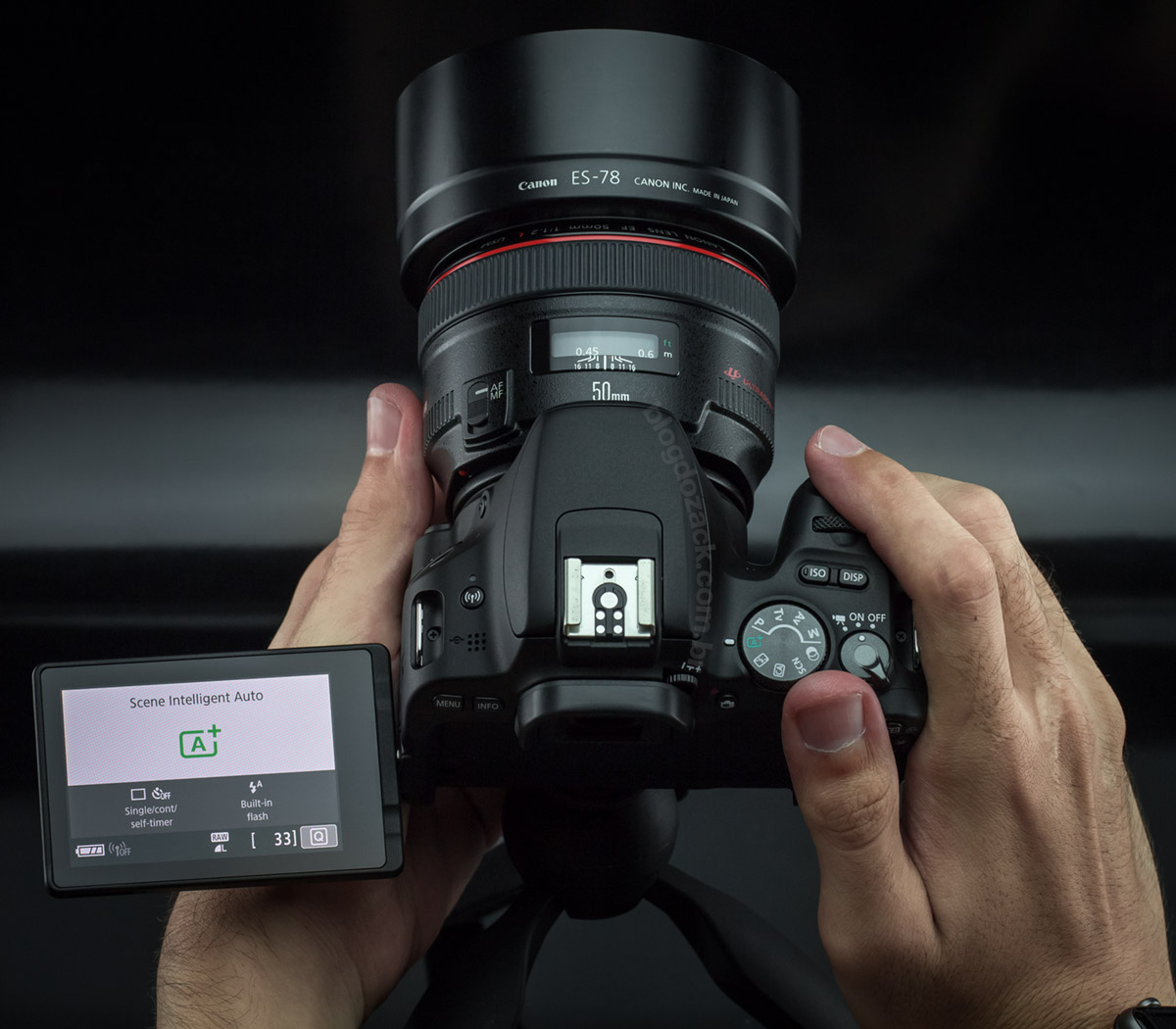
In your hands the SL2 ergonomics are also a strong selling point, and every control is where we expect on an EOS camera; making it a perfect backup for your main camera; or a perfect entry-camera to Canon’s EF/EF-S lineup. Yes, the SL2 is a small camera and many things didn’t made the cut: there’s no INFO top LCD screen (only from the EOS 77D and up); there’s no quick rear-thumb dial; and all physical buttons are smaller than usual. But on the other hand the top shutter release button is big and nice to use, especially compared to mirrorless cameras at this price point. Together with the main control dial at the front, and two dedicated ISO and DISP. buttons, the SL2 controls are identical to other cameras. It’s the same “trigger” control on your right hand as the 80D/5D/6D/7D, but portable on the SL2. Just support the lens by your left hand; “hug” the camera with the right fingers; bring the viewfinder to your eyes; and “forget” about it. It’s intuitive to use.
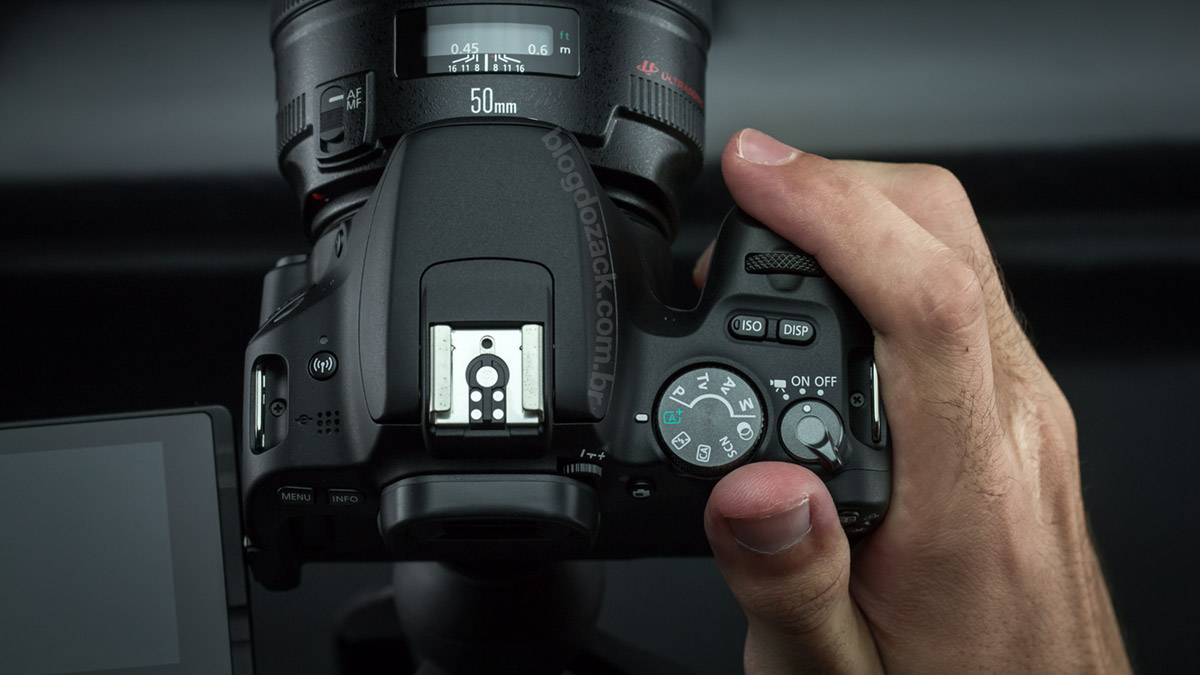
At the rear, Canon had to be creative to bring new ideas compared to the SL; also keeping the ergonomics intact. All the buttons were repositioned to fit the new swivel LCD screen (more about it later), that was fixed on the SL1, and this screen structure is physically long; also to fit the centered viewfinder. The shoulder buttons loupe/AF and AE-lock/grid are now on top of each other, different from most EOS cameras with side-by-side buttons and, I’ll repeat, these are the smallest we’ve seen on an EOS. Between them and the directional control, there’s a generous rear-thumb grip, carved between both areas, made to keep the camera firmer; it’s a showcase of curves and geometry meant to make the handling very secure; something most mirrorless seems to ignore (Sony and Fuji are generally squared). The directional button is also smaller than usual and probably the most simplified ever, with a semi-sphere with four up/down left/right controls, and Canon’s standard SET in the middle; shared by the Q (quick) control; there are no WB/drive/AF shortcuts like the T6i/T7i.
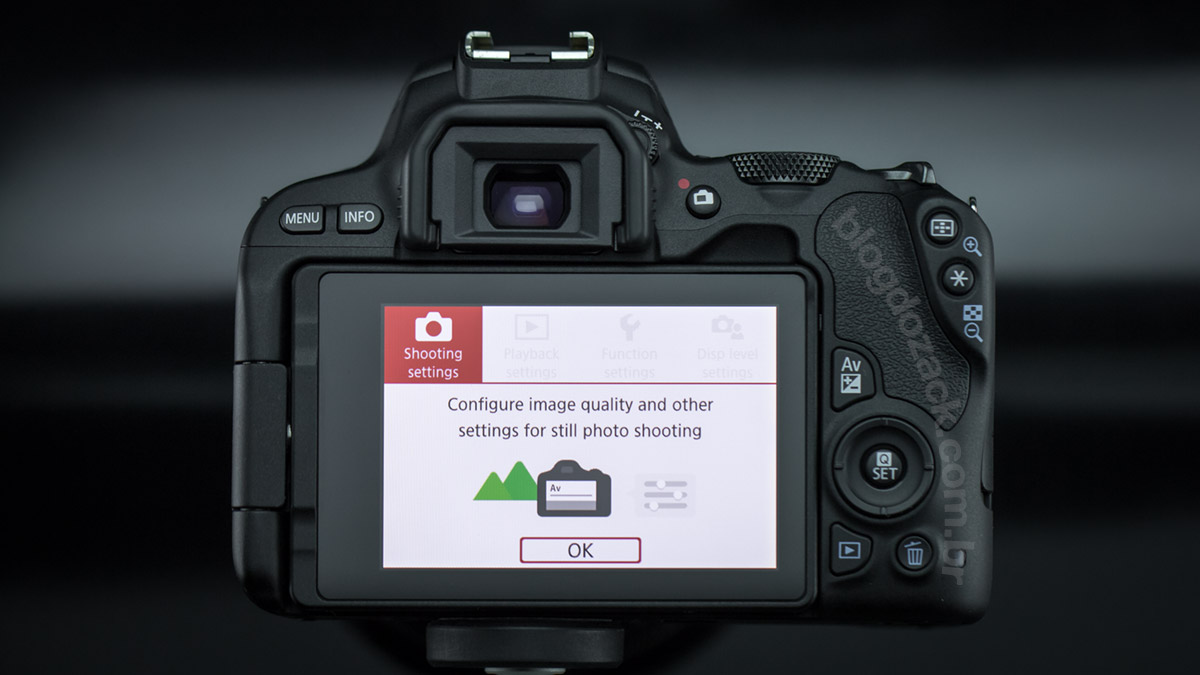
Also borrowed from EOS Rebels is the exposure compensation/Av and MENU/INFO controls, opposed to the playback/delete; the biggest difference from larger EOS cameras. On larger 77D/80D/5D/6D/7D, a rear-thumb jog-dial makes the exposure compensation instantaneous; just turn the disc left or right to compensate +/- EVs. But on the Rebels this command doesn’t exist, and we must press the +/- button together with the top mail dial, near the index finger; thus activating the exposure compensation. It’s also how we switch between aperture and shutter speeds during manual mode, also making the Auto-ISO operation much harder (you must use the quick Q menu to use exposure compensation). But the rest of controls are self-explanatory, with immediate access to the menu (image quality, clock) and playback, also with a physical delete button. It’s the same operation of Rebel cameras, but a little slower and crowded to fit the smaller DSLR.
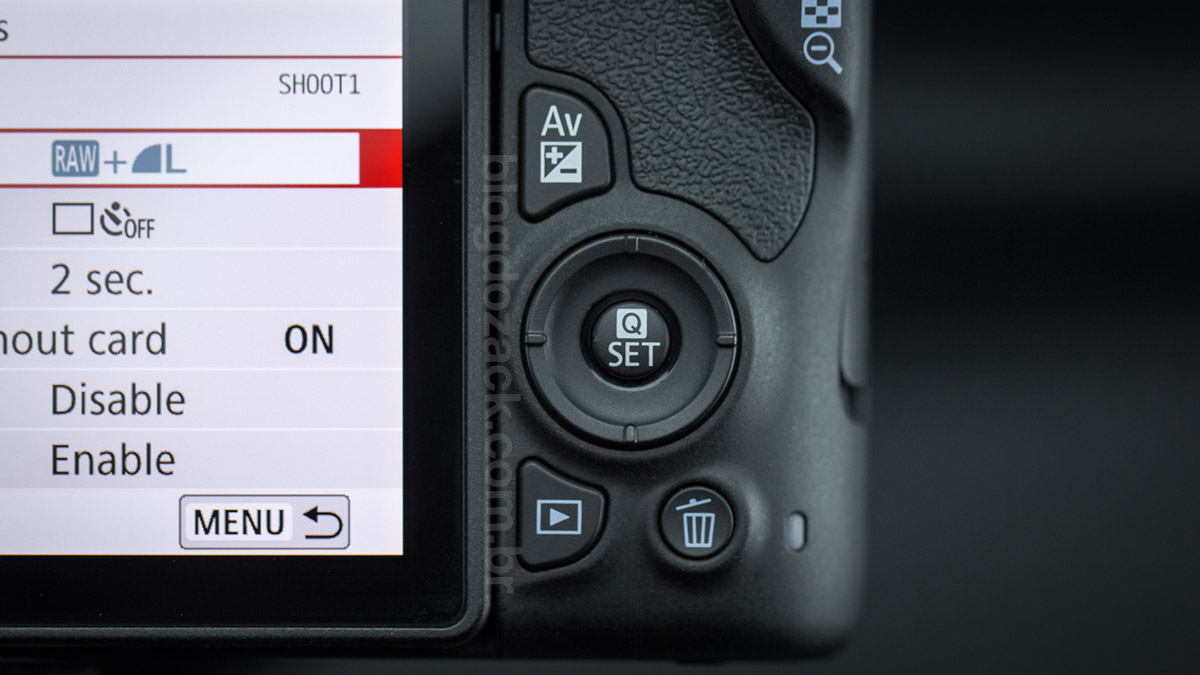
Finally on the left side we get a dedicated Wi-Fi button next to the speaker, used during video playback. Canon ingeniously fitted a mic-in port and a remote control port under a plastic cover on the left (weird in times of bluetooth remotes), and under the right-hand grip are both USB2.0 and HDMI port, both simplified for data only; there’s no charging the battery or transmitting uncompressed videos here. At the top the SL2 keeps the built-in flash over the viewfinder featuring a guide-10 index at ISO100, twice the power of most mirrorless units; and at the front Canon adds a full EF/EF-S lens mount, that’s as robust and precise as any EOS camera, much better than using an adapted mirrorless camera (like the EOS M). To the right side there are both aperture priority button and the LED time next to the hand grip, and under the camera we have access to the LP-E17 battery, over a robust but simplified plastic door; good for about 650 shots using the viewfinder; or 240 using Live View (and 02 hours of video). The single SD card slot sits next to the battery here.
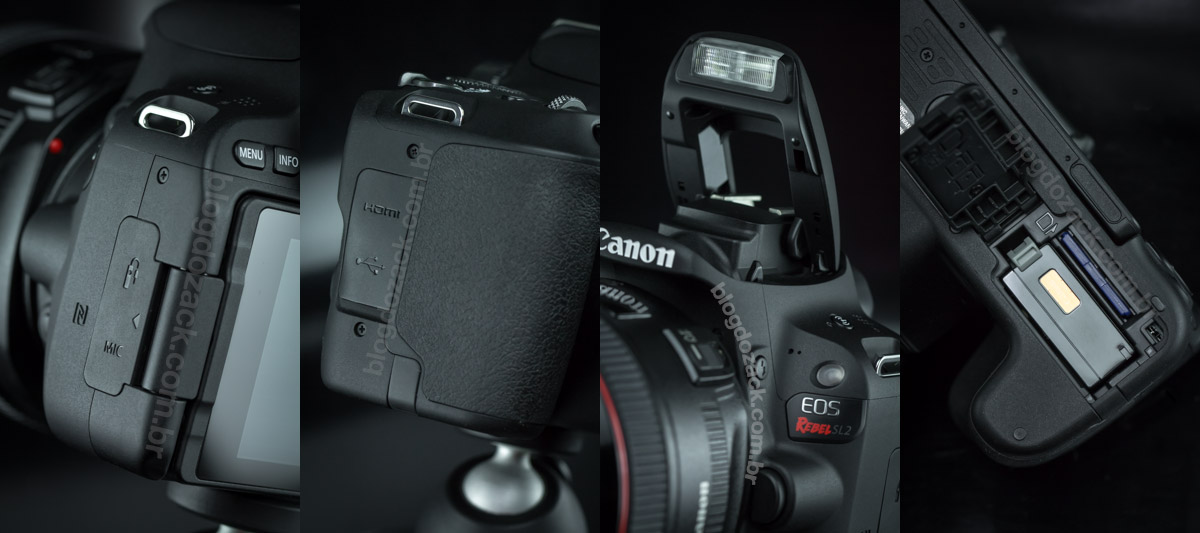
The Canon EOS Rebel SL2 is precisely what the name says. A genuine Canon camera and that reads as “the best build in the market”. It’s a genuine EOS, reading “native support to every EF/EF-S lens ever made”. And a genuine Rebel: the best this manufacturer have to offer at a reasonable price-point. And that’s the second generation of the SL small and light lineup; truly the smallest DSLR on the market, and probably the best “small camera” out there. The build quality impresses for its lightness, robustness and precision, compatible with the invariably large 135/APS-C format lenses. The carefully designed ergonomics pleases the hands, with plenty of grip to hold-on to; hard to find on most mirrorless alternatives. And Canon’s creativity impresses in keeping the SL2 complete with physical controls. Some say “less in more” but the mirrorless market might make too many concessions just to leave the mirror behind. But as we’ll see, maybe the SL2 showcases mini is more: more controls, more ergonomics and more performance; despite its portability.
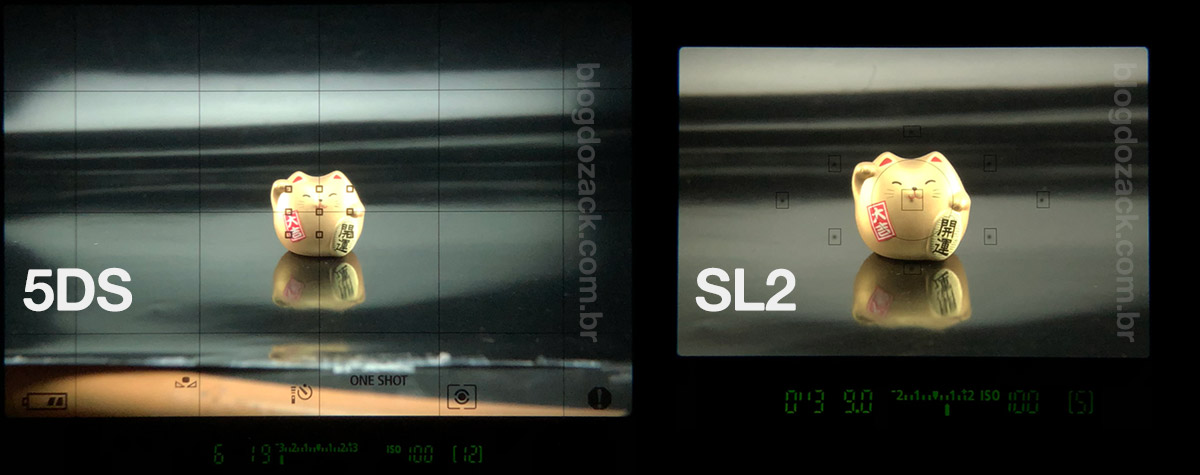
Before we talk about the SL2’s performance, let’s talk about the soul at every DSLR camera: its centered optical viewfinder that’s “connected” to the lens; and the rear LCD screen, to playback photos or use the Live View. On the SL2 the viewfinder is a penta-mirror system composed of – duh – mirrors that cover about 95% of the ASP-C sensor area, with a 0.87x magnification; one of the smallest we’ve seen on a DSLR. The resulting image is small and “distant” (not immersive), despite incredibly sharp and clear, as there’re no visible chromatic aberrations; except around the edges; with practically no geometric distortions. It’s by far better than any electronic EVF on mirrorless cameras that invariably showcase weird colors and contrast far from reality, despite Canon’s choice to leave its “Intelligent Viewfinder” technology absent from the SL2; its viewfinder is limited in data overlays, and feels dated compared to most competitors; it’s just very basic.
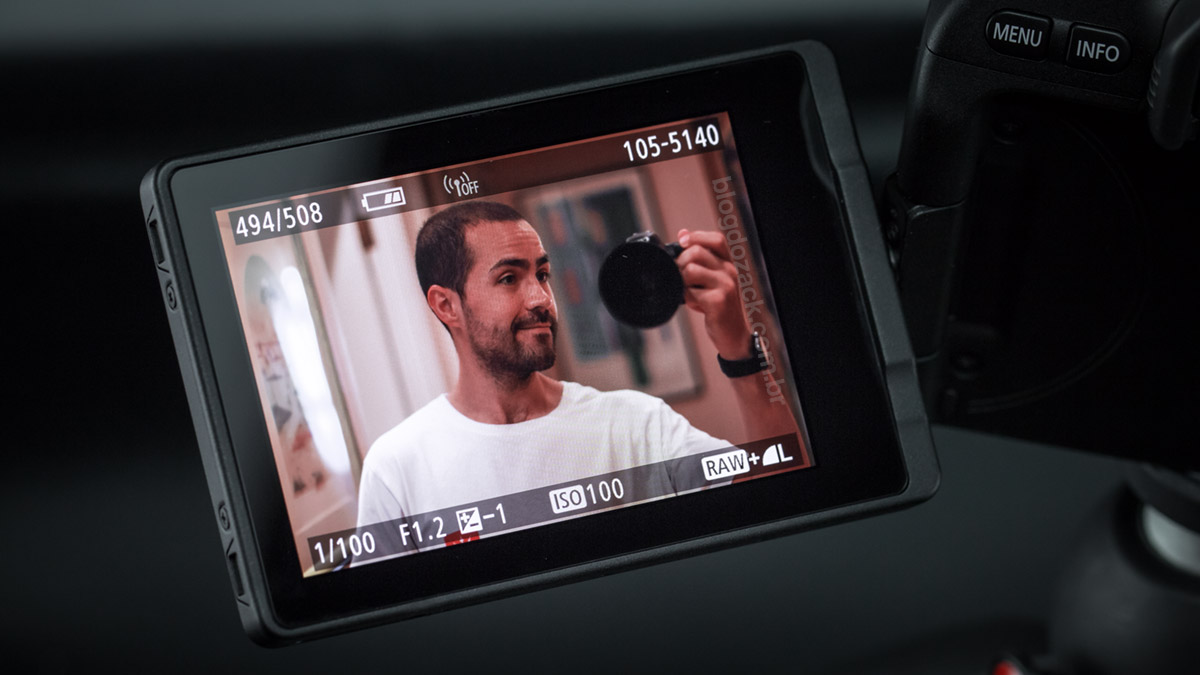
The LCD screen, however, sits on the premium side of the scale. With a 3” panel at a 3:2 ratio, with the same 1.04M resolution of the EOS 6D Mark II/80D/T7i, the images are sharp and saturated; although its pixels are more visible than these models. The SL2 highlight is the new Vari-Angle Touch panel, not found on the 2013 SL1, and it can be rotated outside of the camera, facing the front, perfect for selfies or the record personal videos; supported by a very robust hinge. I’ve never seen a similar panel from other brands, and it’s yet another advantage of the SL2 over mirrorless cameras. Also to keep its dimension as portable as possible, Canon developed a very sturdy LCD: it’s nearly 40% thinner than the one found on the EOS 6D Mark II, despite being longer and as rigid. And for the first time it uses a metal piece on the rear, also contributing for the camera’s durability.
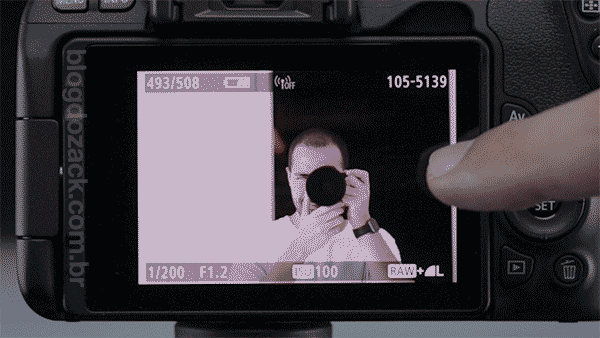
Also not only this panel is touch-sensitive, but Canon’s complete interface is touch-interactive. The main menu and quick menu (invoked by the Q button) can be navigated by touch, drastically enhancing its agility. Instead of pressing the rear control, you can simply touch on different tabs, and advanced features like the face-detection AF during Live View can be as intuitive as most smartphones; also great to use during video recording. And during playback smoother gestures like pinch-to-zoom and swipe can be used to change pictures. Canon was 5-years ahead of its time when it introduced the Vari-Angle Touch on the EOS T4i, and brands are just now catching up.
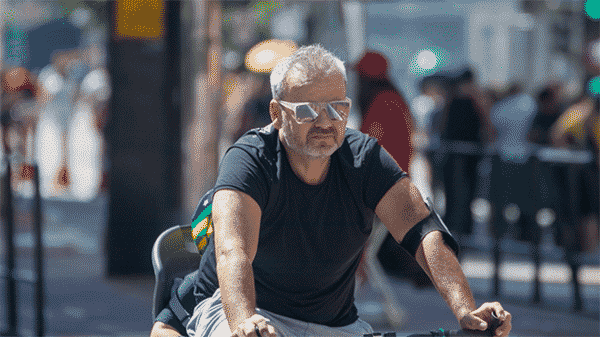
Inside, the EOS SL2 brings the same performance of more expensive Canon cameras, with minimal cuts in order to make it smaller. The main highlight is the DIGIC7 processor, more power efficient and capable of driving the camera up-to 5fps in continuous shooting mode (without AF+AE); and deliver the fast usability we’re used to on Canon cameras. The boot time is as fast as 0.2s using the viewfinder and the playback is done also in little as 0.2s. The Dual Pixel AF is impressive at 0.03s (yes, two zeros in front of that three), for the same shooting speed of any EOS DSLR; another advantage over most mirrorless cameras. The fastest of them all, the Fujifilm X-Pro 2, needs about 0.5s to boot and shoot the first shot; it’s twice the time needed by this entry-level Canon SL2.
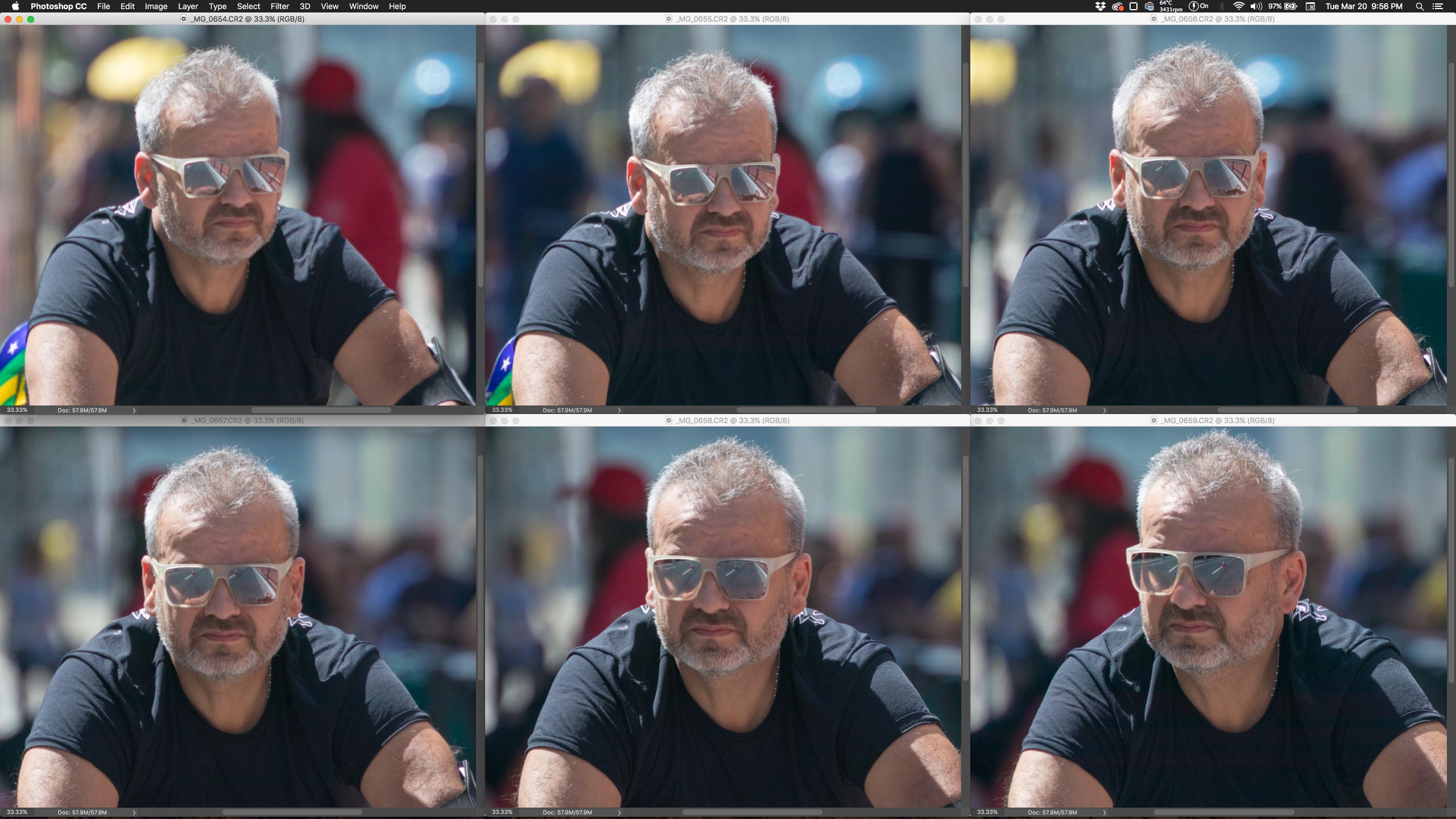
“Cyclist” with the EOS SL2 + EF 70-300mm f/4.5-5.6 DO IS USM at f/5.6 1/1000 ISO100 @ 300mm; crop 33%; click for larger.
What didn’t find a place on this tiny Rebel were some of Canon’s already entry-level features; found from the T7i and up. The SL2 mirror system, for example, doesn’t feature the same counter-weight system to reduce vibrations, rendering a slightly noisier and drier click. While it does feature a “silent” shutter release mode, that simply delays the mirror/shutter/mirror cycle; not the same thing. The internal buffer is also limited for sequential shots, with a declared rating at just 06 raw files; well bellow both the T7i/80D 18/22 raw files. This is limiting for those shooting action and some social events, despite being cohesive with this class of camera. Curiously I could reach up-to 07 raw+JPEG files using a 95MB/s SD card, but it’s not sustainable; I recommend shooting JPEGs only for unlimited shots. But on a daily basis the EOS SL2 is as fast as any other EOS camera.
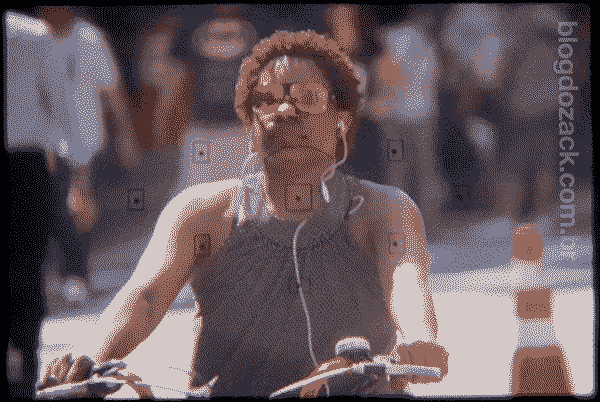
Another cut to keep the EOS SL2 under the T7i is the simplified AF module, with just 9-points and a single cross-type; almost jurassic and the same as the 2011 T3i (the T4i got an all-cross-type module). Once again let’s be frank: this is not a bad nor slow AF module. The center point, for example, features a high-precision mode with lenses featuring f/2.8 or larger apertures, in order to guarantee sharp shallow depth-of-field shots. Canon declares an up-to -0.5EV sensitivity for low-light shooting, equivalent to a single candle over one square meter; nice to work with virtually every light situation. The peripheral AF points are better used to feed the predictive AI SERVO mode, that not only measures the focusing distance, it calculates the next subject position to shoot complete sequences in focus. And using a good technique, it’s perfectly fine to work with the SL2: use the center AF point in single mode, and the adjacent points for continuous shooting.
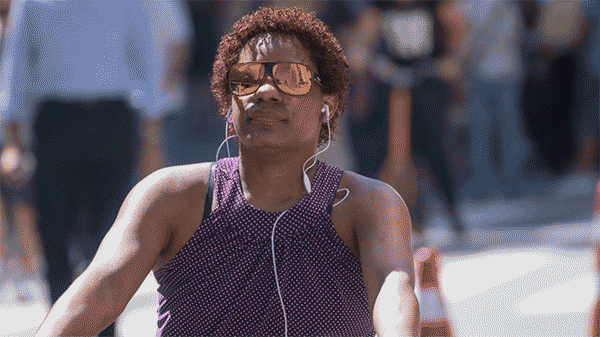
On a daily basis the focusing through the mirror is pretty simple. Just point the camera to any contrast point on the subject, and the SL2 will virtually focus at the same speed as any other EOS camera; that’s a fraction of a second! When tested with Canon’s top of the line EF 50mm f/1.2 L USM, thanks to the same battery voltage of bigger EOS cameras (5D/6D/7D) the SL2 focusing speed is the same. During the day it’s great to see the SL2 “jumping” from point to point, with fairly good precision; it’s easier for the photographer to loose body balance and take out-of-focus images, than for the camera to loose focus. Under low-light the performance is also reasonable once the -0.5EV sensitivity is welcomed: inside a closed room lit be just a window, the SL2 center point focuses instantly, confirming it in under 1 second. Compared to some mirrorless like Sony’S A6300/A6500, which sensitivities are 0EV (twice the light needed to focus), the SL2 is impressive. That’s why those cameras still lag under low-light, whilst even the most basic DSLR focuses without issues.
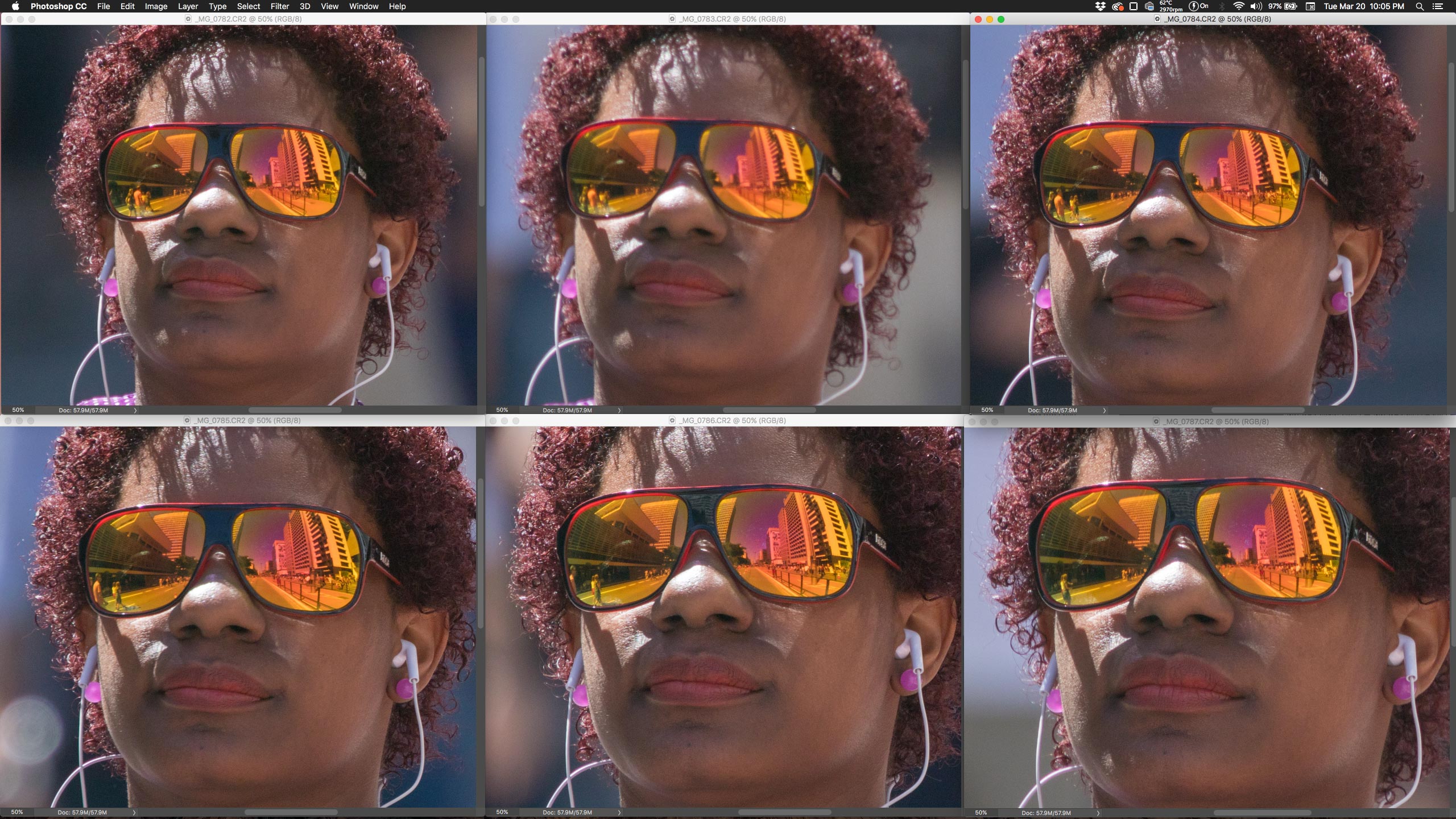
“Cyclist II” with the EOS SL2 + EF 70-300mm f/4.5-5.6 DO IS USM at f/5.6 1/1000 ISO100 @ 300mm; crop 50%; click for larger.
Under more challenging situations during action photography, it’s also interesting to see how Canon manages to deliver good focusing performance, despite the simplified AF module; as long as you know how to use it. Here tested with the EF 70-300mm f/4.5-5.6 DO IS USM, virtually 80% of every action sequences came in precise focus, using all 9-points to feed the predictive algorithm; easily tracking Avenida’s Paulista cyclists; no matter the subject’s speed. While the SL2 doesn’t offer any advanced adjustment for the subject priority, nor the metering module assistance to distinguish skin tones (offered on the T7i and up); the performance is good enough. Yes, these cyclist are fairly easy to track, coming straight to the camera under plenty of light. But it’s yet another example of Canon’s AF expertise: even with just 9-points and a single cross-type.
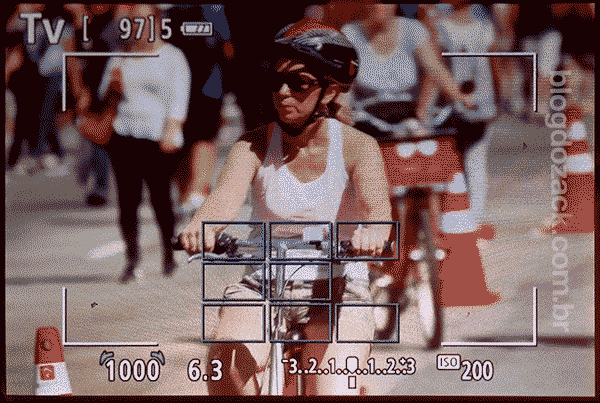
If shooting through the viewfinder feels limited, maybe the SL2 biggest headliner is the Dual Pixel technology during Live View; the best auto-focus system on the market, still without peers. Based on the 24MP CMOS image sensor, the idea is to use two photo-cells per pixel (thus the Dual Pixel moniker) to measure the subject’s distance via phase-detection; instantly focusing the lens. With an up-to 80% focusing area and offered in every pixel (so almost 20 million focusing units!), this data thread makes fast Live View focusing a reality (using the rear LCD screen), also absolutely precise; with no front/back focusing issues. Also both tracking, face detection and predictive SERVO modes are available, making the SL2 one of the best auto-focusing cameras on the market as well.
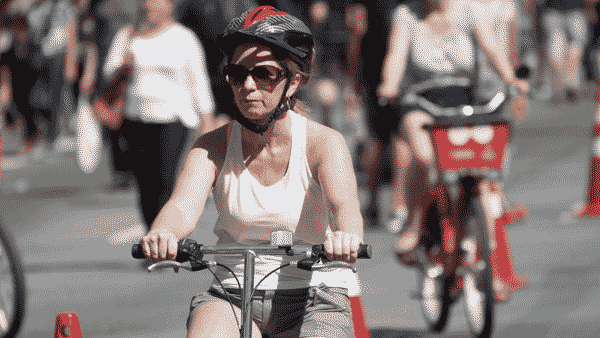
Under plenty of light, the focusing speed promises is at 0.03seconds with Canon’s top-of-the-line USM lenses (L series, ring-type or NANO-USM); easily delivered by the SL2. It’s amazing to see large lenses, with large, heavy glass pieces, instantly focusing on the subjects; giving another dimension to Canon’s DSLRs; if the viewfinder system seems limited, give the Live View mode a chance! Canon also promises a -2EV sensitivity at 80% of the Live View frame under low-light, thus 4X more sensitive than the viewfinder, also making the SL2 far more capable than most mirrorless (maybe behind just Sony’s US$4999 A9!). Both automatic, zone and single point modes are available, all interactive with touch-controls, making it faster to use. It’s a giant leap forward any another camera at this price point, and better than most smartphones. It’s the future of Canon auto-focusing system, but delivered today on the EOS lineup; even on the smallest DSLR possible, the SL2.
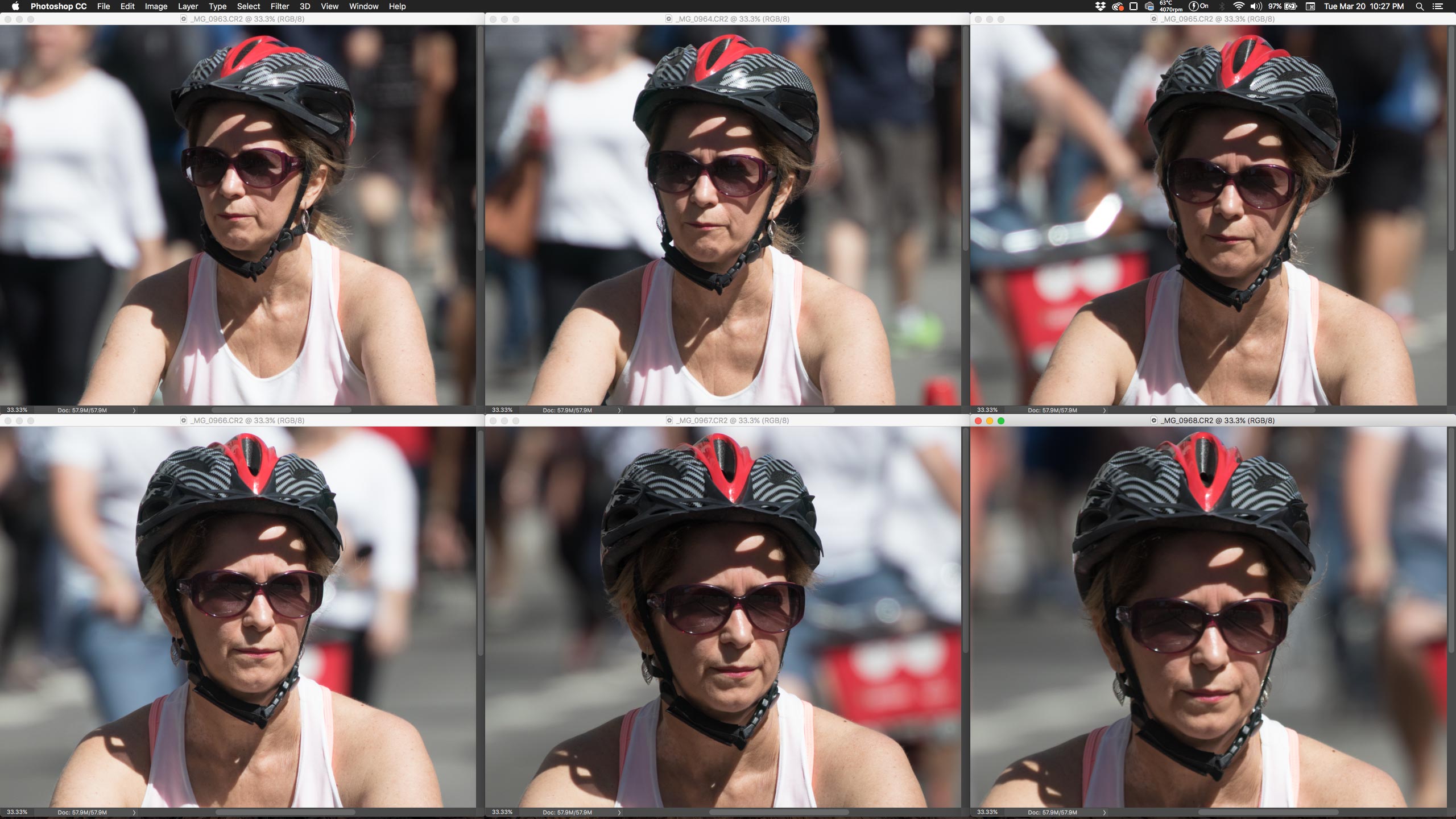
“Cyclist III” with the EOS SL2 + EF 70-300mm f/4.5-5.6 DO IS USM at f/5.6 1/1000 ISO200 @ 300mm; crop 33%; click for larger.
Another interesting feature offered during Live View is Canon’s SERVO AF mode, used for predicting the next focusing point, thus shooting complete in-focus sequences; all in the EOS SL2. With recent DIGIC7 cameras (T7i/M5) the performance have been reasonably good so far, with a low accuracy rate of just 50%; somewhat insecure at which subject to track as well. But given the SL2 limited shooting speed of just 3.5fps during SERVO mode, the precision is somewhat higher; near perfect for moving subjects. Once again tested with Avenida Paulista’s cyclists, the accuracy reached over 90% during Live View; as long as you limit the tracking area to zone mode. You must follow the subject on-screen while holding the AF-ON button, and the SL2 easily tracks its distance during time, at all times. And when it’s time to shoot, a complete photo sequence will be in focus, again giving new levels of flexibility to the SL2; fast, precise, reliable like we’ve never seen at this price.
The Rebel SL2 video recording mode (EOS Movie) also got updated to current Canon standards: reduced resolution, limited file sizes and poor flexibility on the low-cost market; hard to recommend in times of 4K. It’s the same old f*cking story: up-to 1080P60 capture at 1mbpf (60fps at 60mbps; 30fps at 30mbps…) with either IPB-S or IPB-L schemes (time-lapse in ALL-I), internally recorded to the SD card with no clean HDMI output. It’s apparently the same system used by both EOS T7i/M5 via line-skipping over the APS-C imager, filled with artifacts like aliasing and moiré (false colors on detailed patterns); better handled by the new DIGIC7 processor (but far from perfect). The image profile are the same as shooting JPEG photos with no “flat/log” options, despite some reasonably advanced features (like video HDR); but lacking the excellent M5/T7i Digital IS (why, Canon?). The exposure might be fully automatic or fully manual with no options for aperture/shutter priorities, and the focusing is reliable using the excellent Dual Pixel; despite not flexible as the EOS 80D (with different transition speeds). Is the SL2 a good camera for video?
Honestly no, it is not. Ok, ok, ok you’re tired of reading me bitch about the EOS Movie overall quality (except on top-of-the-line EOS C and 5D Mark IV cameras), and the market already gave up on a low-cost Canon 4K camera (maybe the M50 changes that). The EOS SL2 simply lacks in details even at its native 1920×1080 resolution, and at this price point even Fuji announced the 4K X-A5 at US$599 (with lens!), making it hard to swallow Canon. The SL2 video images are borderline awful due to the lack of sharpness and questionable contrast, despite the reliable Dual Pixel focusing. But even here Canon dropped the ball: every single option to configure the AF algorithm like speed and sensitivity, were stripped out of the software (the same as the EOS T7i), making even the Dual Pixel near useless. So the SL2 is worth some desperate takes when you don’t have a better camera with you, but impossible to recommend for serious video creatives. If you’re planning on recording lots of videos and insists in Canon’s EOS cameras, opt for at least the 80D.
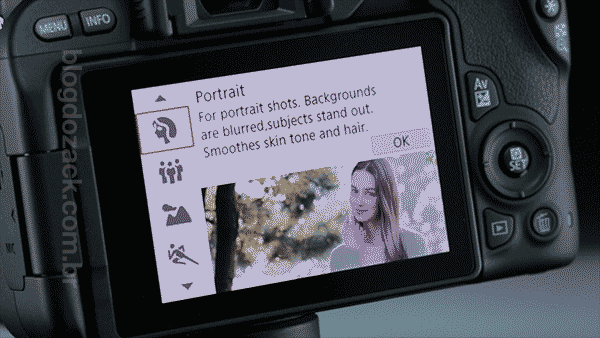
The next highlights on the Rebel SL2 are part of every new EOS camera package, thanks to the DIGIC7 processor and the built-in wireless modules; made to be paired with the Camera Connect app (iOS/Android). The new guided interface is very nice: instead of dark (but efficient) tabbed menus, a new bright and simplified layout displays large icons for each feature; together with photos examples (where applicable) for better photographs. It works like the previous “assisted features”, but now based on graphics and easier to use. Instead of the aperture f/stop setting we get “more/less blur” sliders; instead of shutter speed, we get sharper or motion blurred icons. It’s an extra feature meant fot beginners, and welcomed on an entry-level EOS camera.
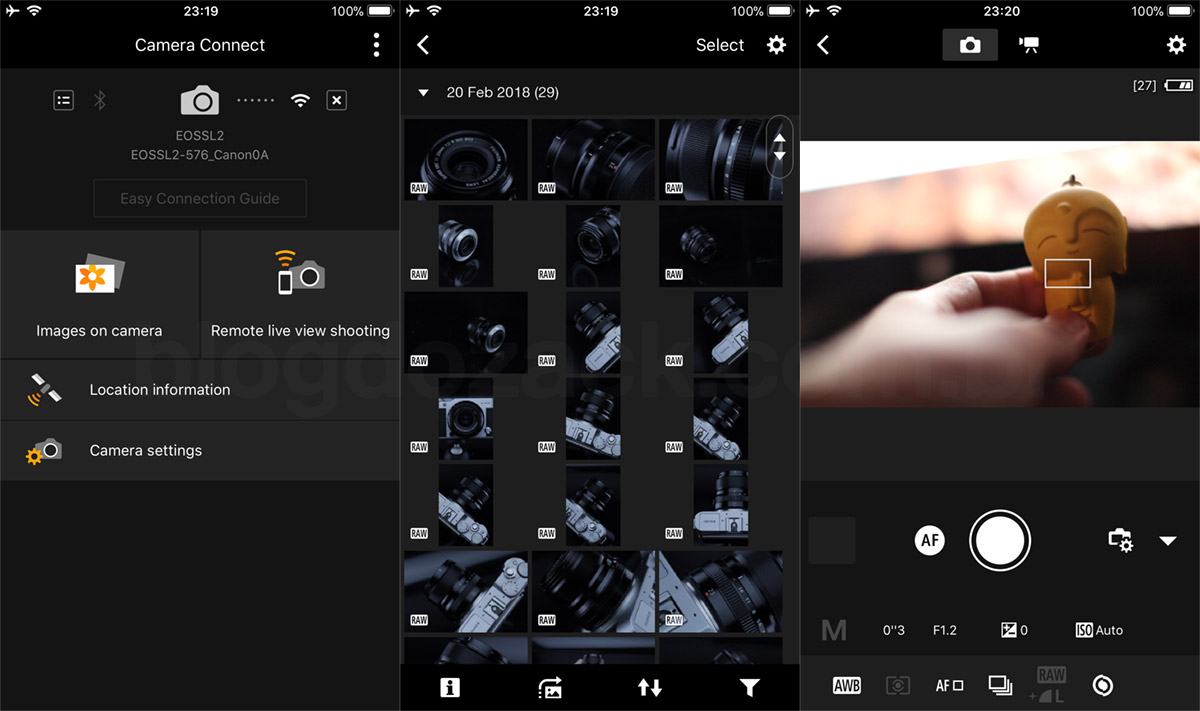
Also the offering in wireless connections is nearly complete on the SL2: Wi-Fi, NFC and bluetooth makes the bridge between the fast, dedicated camera, and the smartphone (always connected and ready to publish); with the same simplified (despite complete) Canon Camera Connect app (iOS and Android). It’s possible to download full resolution images for printing or backing up in the cloud; or instantly post them on social media; all without the need of a computer. And the “Remote” function brings the full SL2 Live View mode to the smart device screen, complete with the image sensor preview; the exposure settings; ISO values and even video recording. And the GPS function allows us to geotag the camera files, using the smartphone location service, displaying the photos on a map; all without wasting battery. It’s the same features of larger EOS cameras.
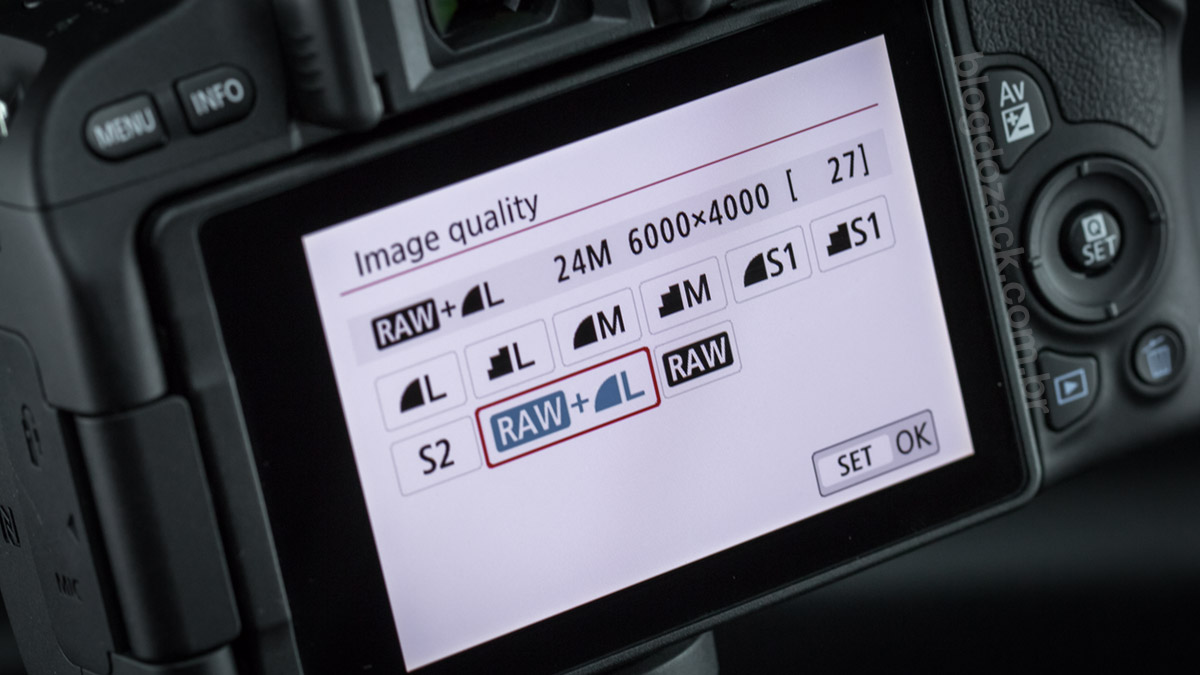
On the other hand some features missing from the EOS Rebel SL2 software might prevent it from being fully explored by professionals. I understand Canon: why keep complicated functions on an entry-level camera? So on the SL2 we don’t get: any raw file mode other than the sensor native resolution of 6000 x 4000 pixels; wireless flash commands from the built-in flash unit, to control Canon’s extensive EX lineup; Kelvin white balance adjustments; AF algorithm adjustments, be it using the mirror module or during Live View; no silent Live View shooting mode; no LCD leveling display; no audio meters during video recording; no RGB histogram during Live View; and not even the in-camera raw to JPEG converter, greatly reducing its flexibility without a computer. Considering Fuji’s US$599 X-A3 that includes the complete X-T2 software, Canon should consider adding more features to its Rebel lineup. Maybe the logic might be to protect some of its more expensive DSLRs, but lets agree: no one would question purchasing a 5D/6D/7D over the SL2.
One last warning about the SL2 usability lies in its also overly simplified metering system, compared to most recent EOS cameras (except the T7). On the SL2 Canon opted for its aging double-layer 63 zone metering system with awful results! During those SERVO tests with Avenida Paulista’s cyclists, for example, nearly every photo came out about -3EV (!) of under-exposure, nearly useless on JPEG mode (the files are completely black). On Montana’s landscapes the opposite happened: large areas filled with trees would make the SL2 over-expose the highlights, making the blue sky turn white. It’s much different from the EOS 5DS used at the same time, and only during Live View, using the full sensor readout, that the SL2 exposures flawlessly. So I recommend double checking most of your files: the metering is usually questionable.

“Montana” with the Tokina AT-X DX 10-17mm f/3.5-4.5 Fisheye at f/7.1 1/320 ISO100 @ 17mm; all photos with the EOS SL2.
With a 24MP Dual Pixel CMOS image sensor rendering 6000 x 4000 pixel files at a native 14-bit raw .CR2 compression, it’s easy to suspect the SL2 uses the exact same imager from the EOS 80D/T7i/M5; and that’s a good thing. Simply the best APS-C chip ever from Canon (better than the 7D Mark II), the SL2 maintains virtually the same “image quality” from the more expensive cameras; all in a simplified package just like Fuji did on its brilliant X-A3 (probably the best APS-C sensor on the market). The SL2 is capable of rendering perfectly detailed files for large-format prints with plenty of data for adjusting raw files, be it to “recover” clipped highlights or shadows (the internet’s famous dynamic range), all with good ISO performance considering the color quality. The JPEG files are a little bit poor straight-out-of-camera, with lackluster saturation, sharpness and contrast, made for post-processing. But overall the SL2 has the expected performance from an APS-C.
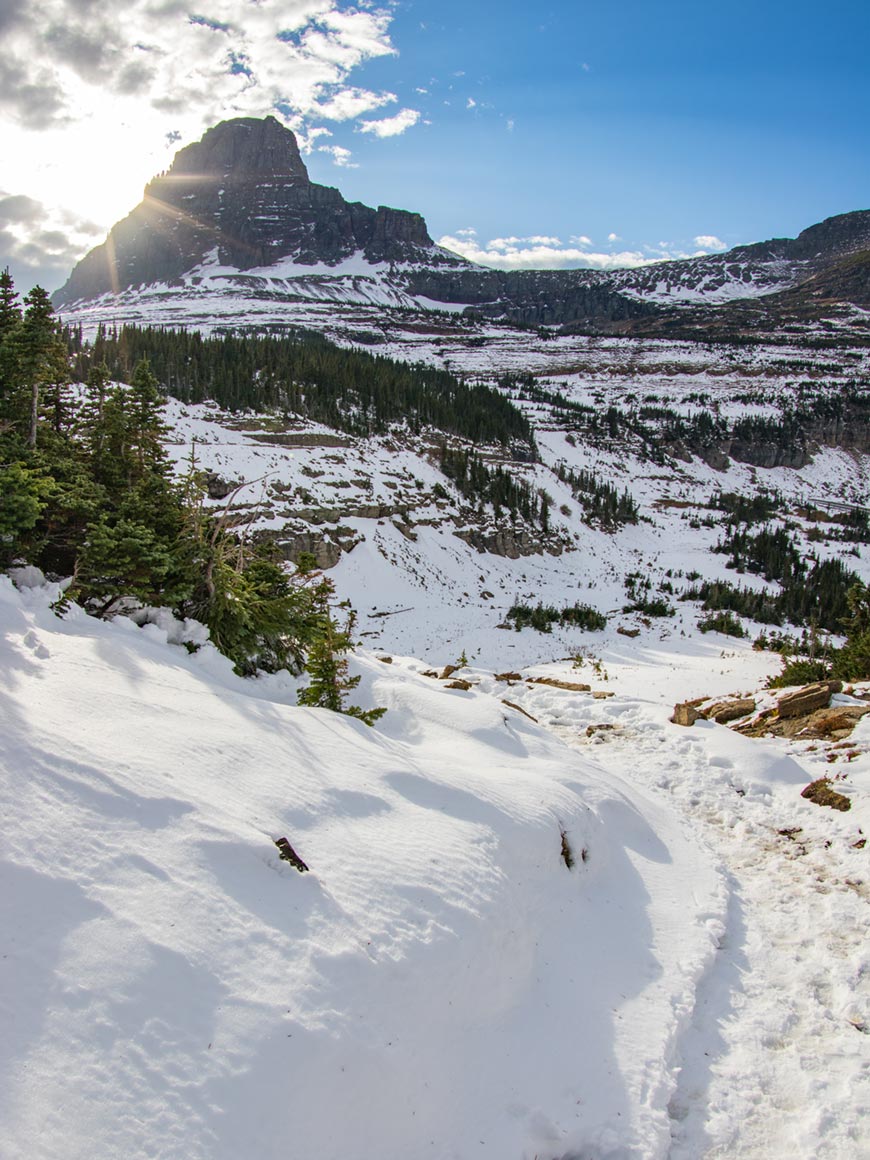
“Glacier” with the Tokina AT-X DX 10-17mm f/3.5-4.5 Fisheye at f/7.1 1/500 ISO100 @ 14mm.
Between base-ISO100 and ISO400 the EOS SL2 24MP CMOS imager impresses at its detail rendering. Be it to printing large-format posters, or for high-quality social media images, the APS-C format stopped at the 6000×4000 file dimension; flexible enough for most photographers, all with a good balance of image quality/performance. Almost the whole market is satisfied by this resolution: the “low-cost” 6D Mark II full-frame camera adds only two extra MPs (26MP) and only much more expensive models (US$3000 5D Mark IV) surpass 30MP (I personally chose the 50MP 5DS to be my main camera). So the EOS Rebels SL2 delivers the exact same performance as every other camera, and it’s good for everything: as a main camera; a backup camera; or a starter camera. Canon was happy to boost the SL2 above the 18MP T7 and the European 4000D.

“Folhas” with the Tokina AT-X DX 10-17mm f/3.5-4.5 Fisheye at f/7.1 1/160 ISO100 @ 10mm.

Crop 100%, this generation’s native 24MP APS-C, filled with details.

Crop 100%, every single tree perfectly rendered, limited just by the lens optics.
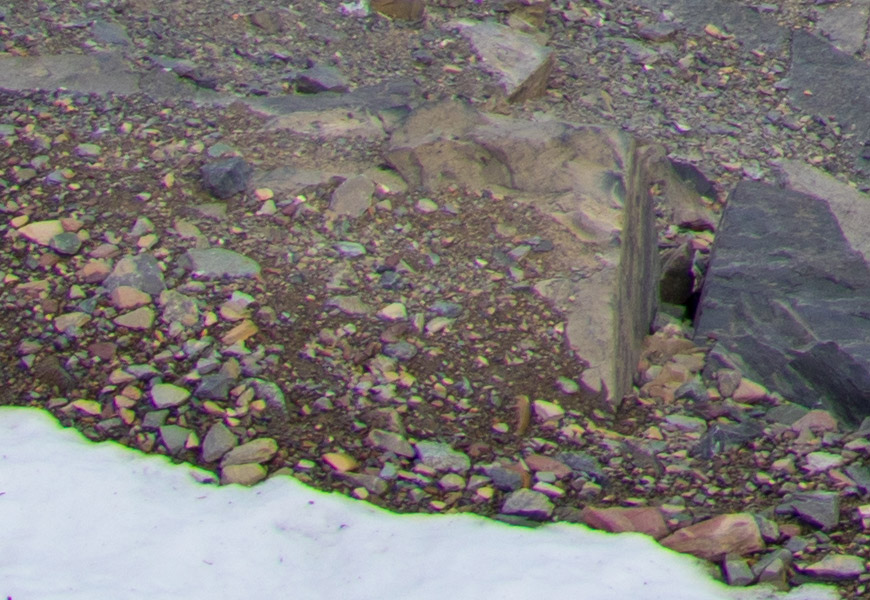
Crop 100%, prepare to purchase high-performance lenses with less chromatic aberrations.
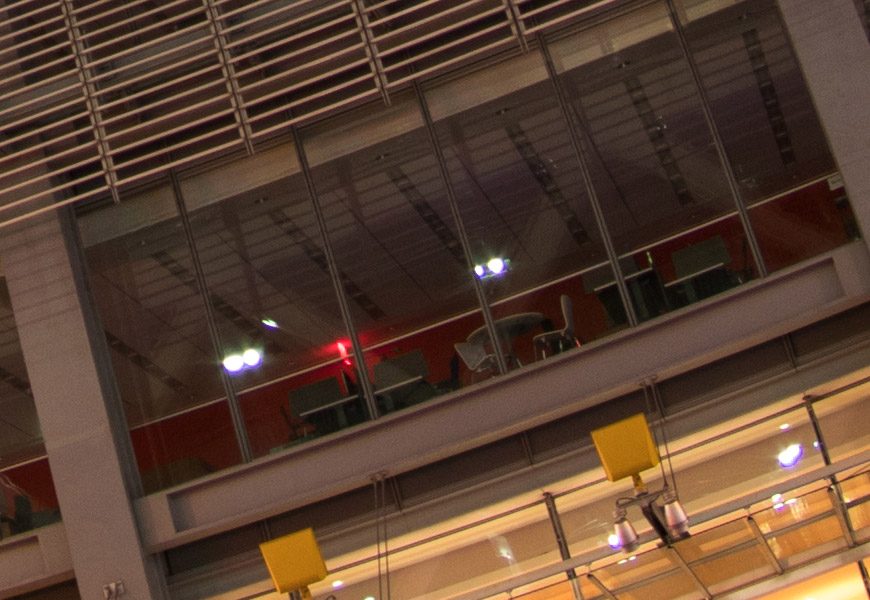
Crop 100%, and also prepare a sturdy tripod for high quality long exposures.
“Montana II” with the Tokina AT-X DX 10-17mm f/3.5-4.5 Fisheye at f/8 1/160 ISO100 @ 15mm; before and after raw post-processing. “Viewpoint” with the Tokina AT-X DX 10-17mm f/3.5-4.5 Fisheye at f/7.1 1/200 ISO100 @ 10mm; before and after raw post-processing. “Grand Canyon” with the Tokina AT-X DX 10-17mm f/3.5-4.5 Fisheye at f/7.1 1/125 ISO100 @ 10mm; before and after raw post-processing. “Monument Valley” with the Tokina AT-X DX 10-17mm f/3.5-4.5 Fisheye at f/5.6 8s ISO100 @ 10mm; before and after raw post-processing.Also this generation’s performance in keeping highlight and shadow details on raw files (“dynamic range”) is good for most files; not the best in market, but as good as most APS-C peers. Let’s face it: the APS-C format still lags behind most 135-format full-frame imagers even from 5-years ago (Nikon D800E), and so far just one APS-C camera was capable of recovering more than +4EVs with virtually no loss in performance (and that’s Fuji’s US$599 X-A3; better even the Nikon’s also great D500). Both Sony A6300 and A6500 (US$989 and US$1389) and Fuji X-Trans III X-Pro 2, T2 and T20 barely keeps its colors above +3EV adjustments, and Canon renders the same performance on all it’s current APS-C 80D, T7i and M5; and now the SL2. For everyday adjustments the Rebel model is more than enough: landscapes are easy to handle for a pleasing saturated look with balanced contrast; product photography is made simple with a single click exposing both shadows and highlights latitude (no bracketing required); and even files let down by the questionable metering are easy to fix with the 14-bit .CR2 compression; great for a raw workflow from the entry-level camera.
Under higher ISOs the performance is also identical to other APS-C cameras, all with visible noise above ISO800, despite relatively intact details up-to ISO2000; with color data loss only after ISO6400. The SL2 is perfect to be used with smaller aperture zoom kits, easily raising the ISO to compensate for the smaller apertures. What’s interesting is how the APS-C format got better in handling color under reasonably high ISOs with intact colors between 2000-4000, much better than past generation’s ISO1600 (like the imager used on the 7D Mark II). Actually even the native ISO25.600 is usable with raw files, keeping details on well exposed zones with easy-to-fix Bayer chroma noise pattern. It’s a much better performance than any smartphone above ISO640, and the SL2 is a better choice for the everyday photographer; perfect to always be with you.
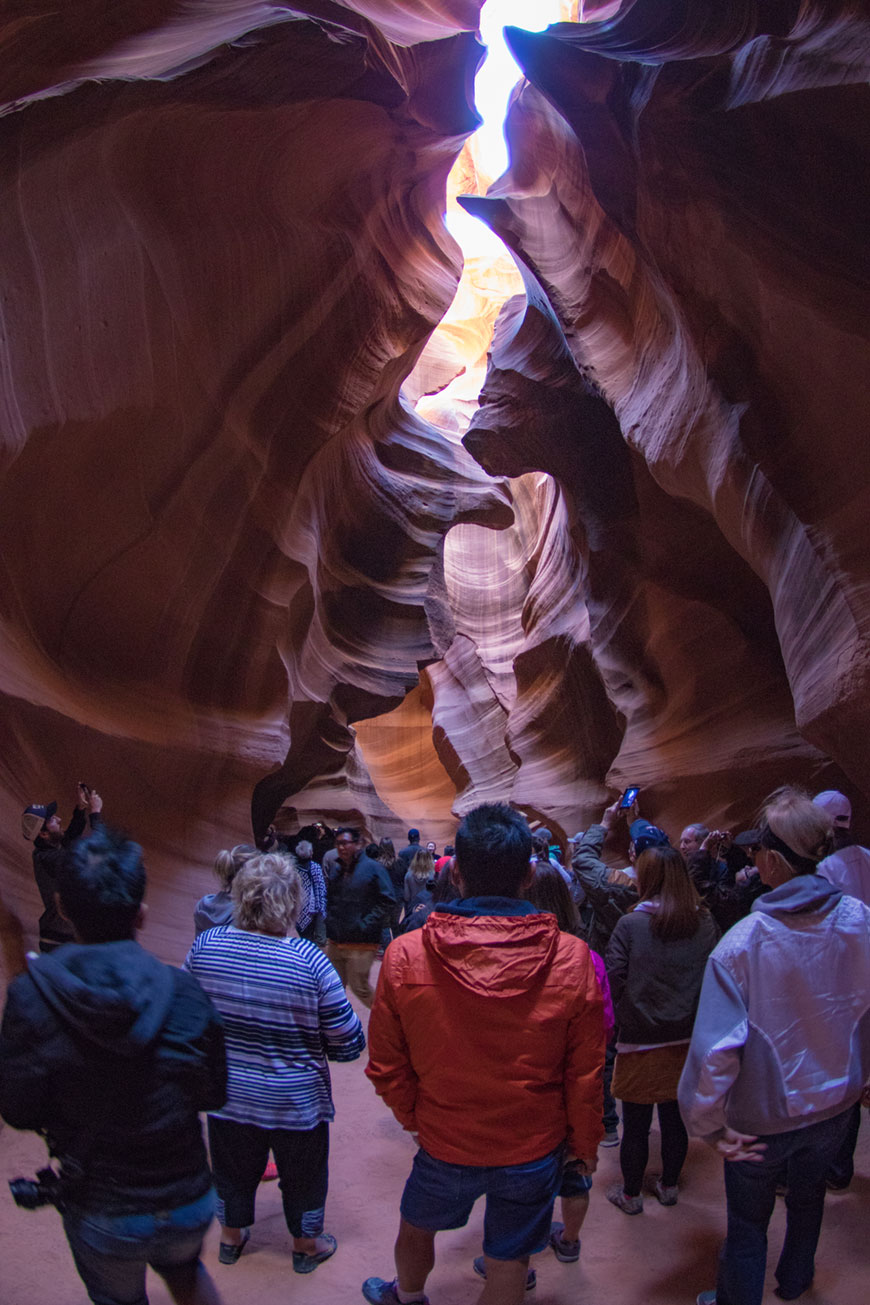
“Antelope Canyon” with the Tokina AT-X DX 10-17mm f/3.5-4.5 Fisheye at f/3.5 1/40 ISO1250 @ 10mm.
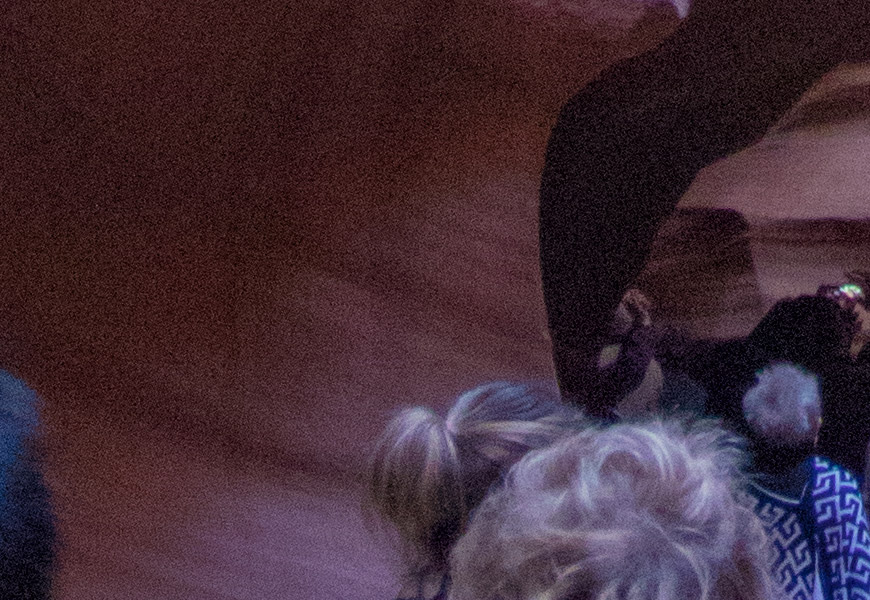
Crop 100%, the CMOS imager fine pixel pattern, with nearly perfect colors and details.
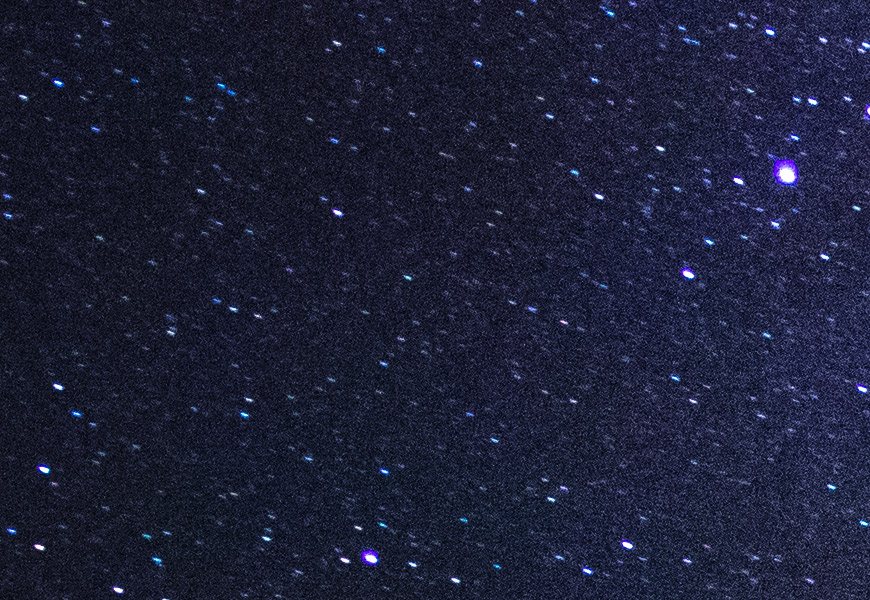
Crop 100%, an extreme file recovery reveal much more noise than normal.
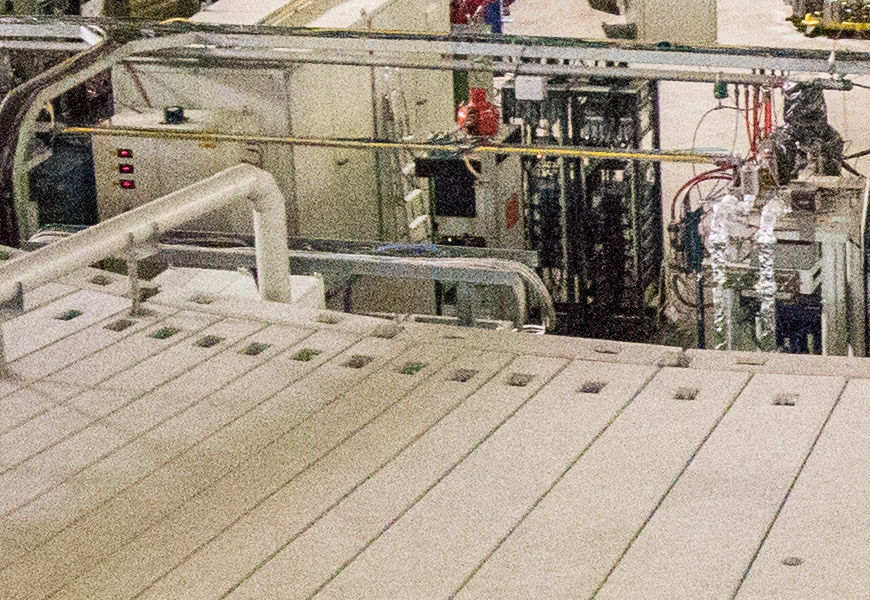
Crop 100%, well exposed zone naturally display less noise.
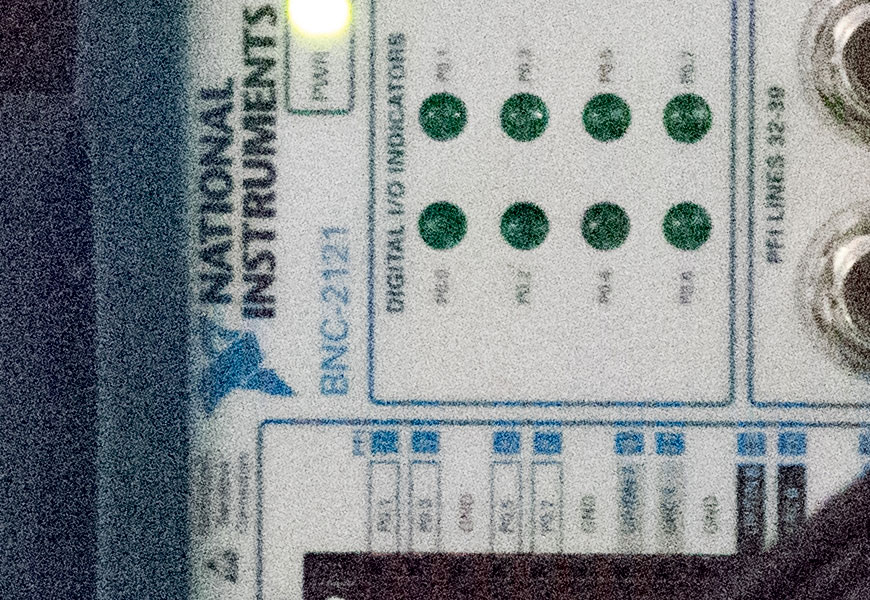
Crop 100%, colors, details and sharpness loss under the maximum native ISO.
”Yellowstone” with the Tokina AT-X DX 10-17mm f/3.5-4.5 Fisheye at f/7.1 1/200 ISO100 @ 10mm; JPEG vs. raw. Crop 100%, raw files details are much sharper than JPEG. “Instrumento II” with the EF 100mm f/2.8 USM at f/2.8 1/60 ISO25600. JPEG vs. raw. Crop 100%, disabled in-camera noise reduction keeps the sensor’s flaws, hidden from raw files. ”Times Square” with the Tokina AT-X DX 10-17mm f/3.5-4.5 Fisheye at f/10 1/8 ISO100 @ 10mm; JPEG vs. raw. Crop 100%, well rendered textures on the raw file, also with a fixed exposure. ”Cabana” with the Tokina AT-X DX 10-17mm f/3.5-4.5 Fisheye at f/3.5 1/40 ISO800 @ 10mm; JPEG vs. raw. Crop 100%, opt for raw files to keep the EOS SL2 full sensor performance.Straight-out-of-camera JPEGs are quite bad from the SL2; hard to recommend when the raw workflow is as easy to use (at least for experienced photographers). The DIGIC7’s standard profile isn’t the smartest at detecting high-frequency details rendering smoother than usual JPEGs; maybe thought to be post-processed nonetheless (using some smart-sharpen filter). No camera is perfect: we just saw Fuji’s overly sharpened X-A3 and Sony’s bizarre BIONZ X aliasing issues. However the SL2 noise reduction is also too aggressive eliminating not only noise but details on high-contrast scenes, making shadows look dull; prefer to cancel any noise-reduction option for better files. Also considering the lack of an in-camera raw to JPEG processor, the recommendation is quite simple: shoot everything in raw + JPEG mode for maximum flexibility. It might seem complicated at first, but it’s not that hard to post-process files; it’s the best way to really push the SL2 to its limits.
Last but not least the Rebel SL2 keeps Canon’s EOS color science intact: easy to process, far from reality, but very pretty in print or screens. It’s always the last verdict on a Canon review. Coming from Fuji’s X-T20 and X-A3 “forced” red, yellow and orange hues – despite pleasing – it’s interesting to see an EOS camera keeping green, blue and pink tones intact; for very vivid files despite not clipping RGB channels. Although the auto-exposure metering is questionable, the EOS SL2 auto white-balance is reliable, now even with two settings for pure white or biased by the natural illumination; guaranteeing perfect shots under mixed light settings. Blue tones are dense from dusk till dawn, and green values are mixed with yellow and browns; for darker tones in touch with reality (distinct from Sony’s neon green). And skin tones feel natural and balanced with white. So paired with EF/EF-S lenses the SL2 colors are pleasing, identical to other Canons.

”Antelope Canyon II” with the Tokina AT-X DX 10-17mm f/3.5-4.5 Fisheye at f/5.6 1/40 ISO1250 @ 10mm.
The Rebel EOS SL2 is, as any Canon camera, a lot of things on a single equipment. It’s a full DSLR with a centered optical viewfinder handled by an ergonomic right-hand grip fixed with an always-on operation; the advantages of traditional cameras. The smaller than usual footprint is its biggest selling point, perfect for photographers looking for a portable do-it-all device; thus keeping the standard performance expected from the larger optics (lenses and sensor); and the native mirror experience. It’s the perfect bridge between the full DSLR market and the newer mirrorless alternatives, that still haven’t found the balance between ergonomics and size; issues already solved by even the simplest DSLR: great battery life, fast AF, nice lens lineups, video recording…

But what we must not forget is how the SL2 fits a genuine Rebel EOS, thus meant for the entry-level photographer, with accessible price and feature; far from the top of the line. So its performance is good enough for 90% of the shots, missing the 10% asked by the professional market. Canon was kind of brilliant in adding high-end processors, sensors and even the Dual Pixel focusing tech on this US$549 camera, but there’s a limit in what it can deliver. Despite that, it’s everything missing on the mirrored market: portability above all, paired with a great low price; all on a single camera. That’s why it’s the best option for beginners looking for an easy to use device that, if worked within its limitations, can deliver virtually every shot you need. Just have it with you and nice shooting!